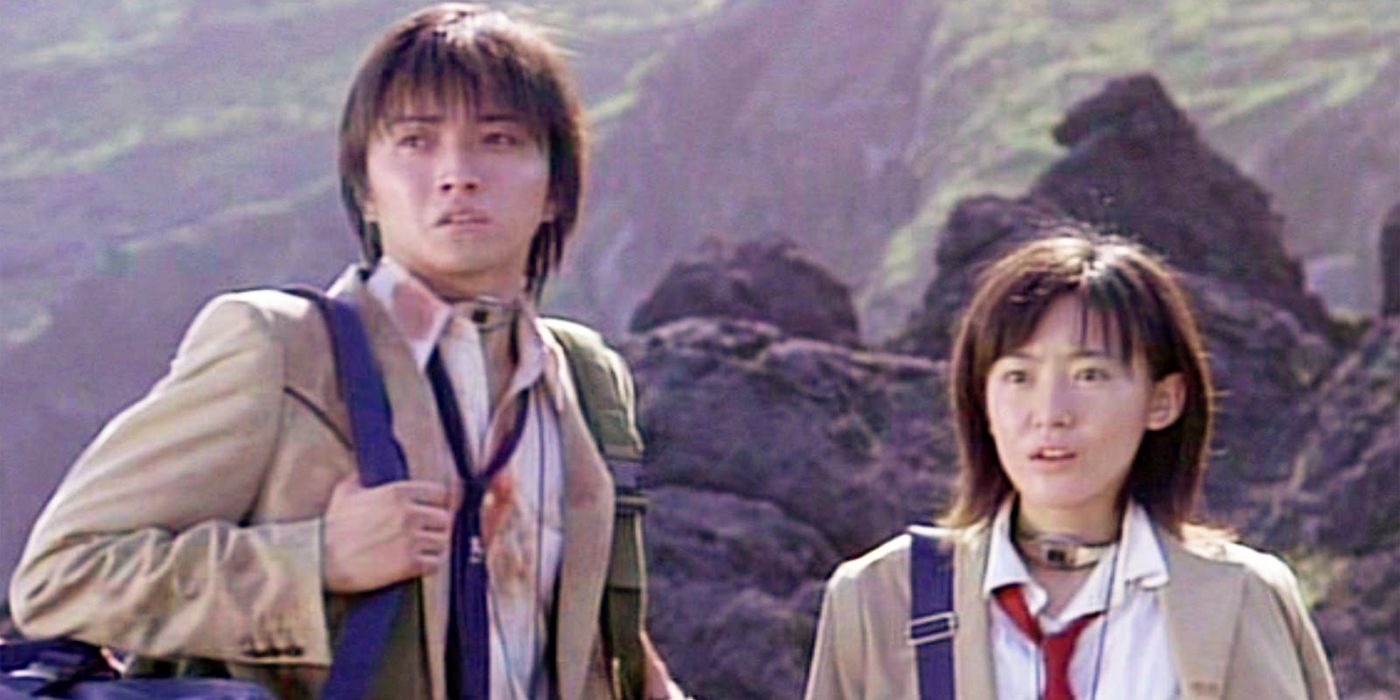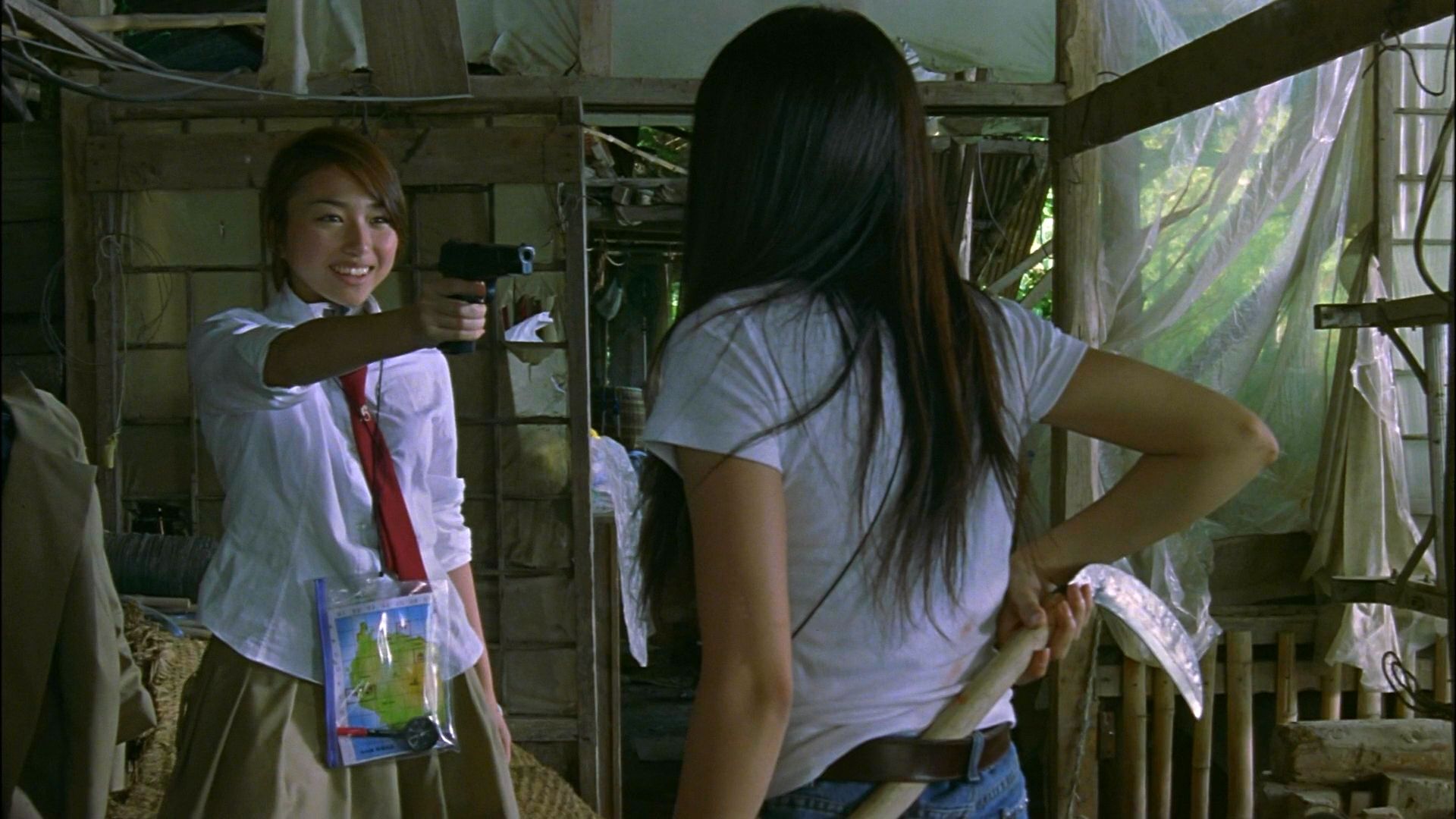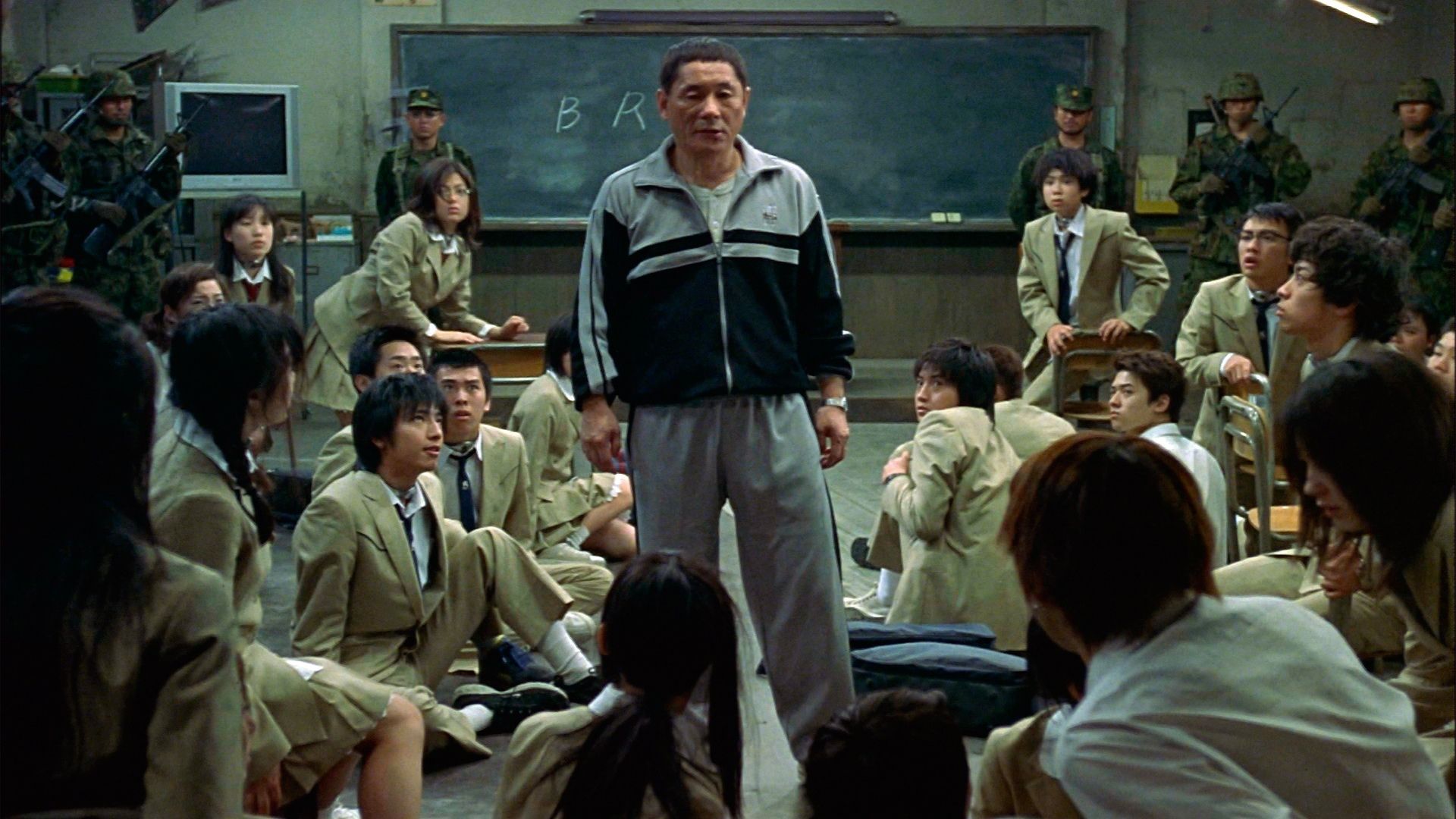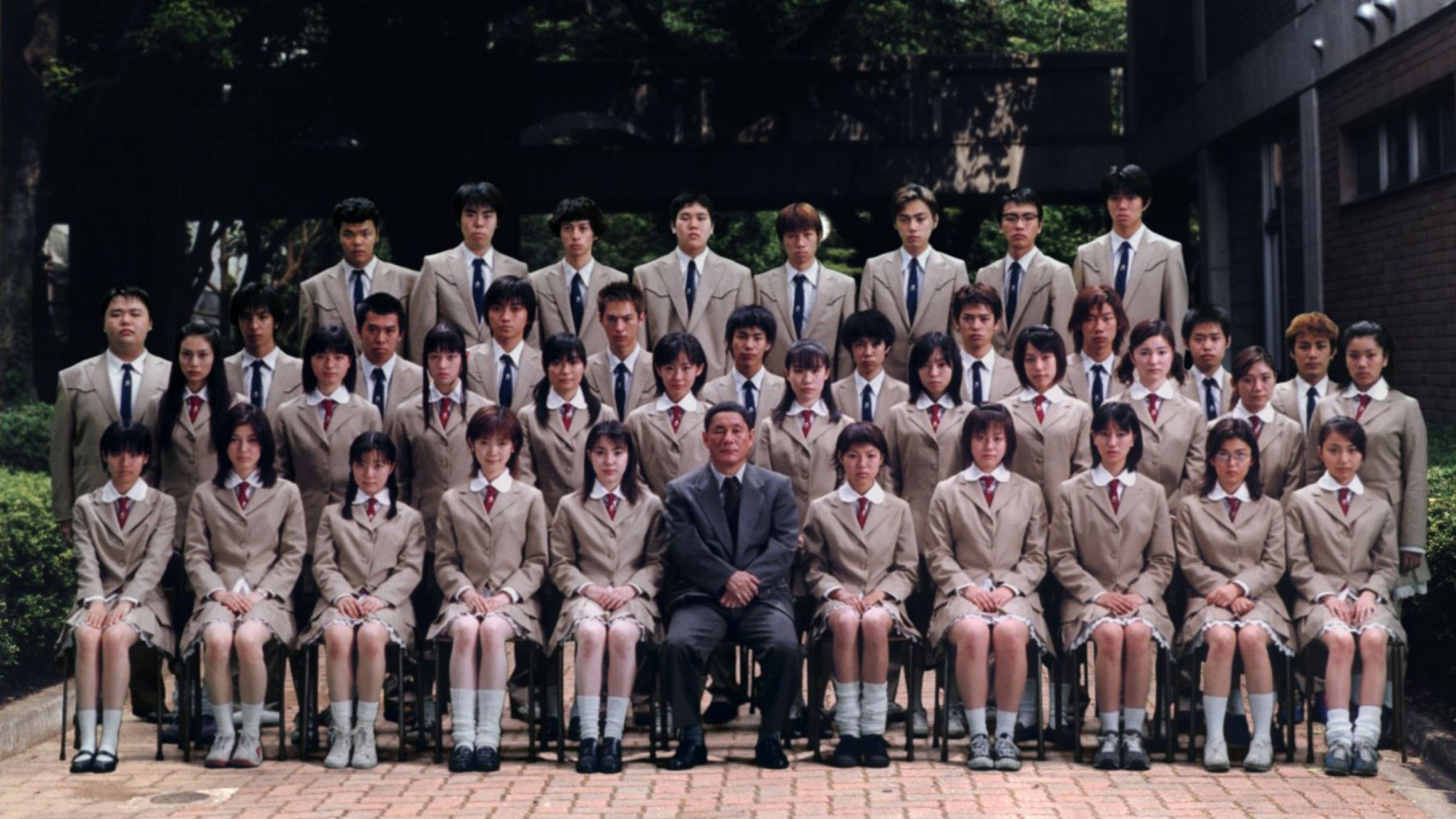At the dawn of the millennium, the nation collapsed. At fifteen percent unemployment, ten million were out of work. 800,000 students boycotted the school. The adults lost confidence, and fearing the youth, eventually passed the Millennium Educational Reform Act AKA: The BR Act.
Battle Royale, which celebrates its 20th anniversary next month, is based on the novel by Koushun Takami of the same name, and was released in Japan on December 16, 2000. Directed by Kinji Fukasaku, with a screenplay by his son Kenta Fukasaku, Battle Royale tells the story of 42 junior high school students sent to an island where they must kill each other until there is only one of them left. The film sparked tons of controversy and became very popular. It was nominated for nine Japanese Academy Awards and went on to earn itself cult status all around the world. Twenty years later, how does the film hold up?
While violence in movies was nothing new in 2000, what made Battle Royale so controversial was both how extreme the violence was, as well as the fact that it was children inflicting violence on other children. Additionally, the film didn’t take the Dawson’s Creek approach with twentysomethings playing teenagers; these were real teen actors stabbing, shooting, and blowing each other up. The killings are graphic and extremely bloody.
The film’s main characters are Shuya and Noriko. Noriko has a crush on Shuya, which is acknowledged, but not a main focus of the story given the circumstances. They form a bond during the game and work with another student, Kawada, who has played the game before and claims to know a way off the island for all three of them.
As the film’s narrative unfolds, the audience is subjected to slaughter after bloody slaughter. Some students choose to play the game and try to win it for themselves. Others kill themselves rather than play. Some cry out for help. Many form alliances and small groups to come up with different ways to beat the game together.
Being released just after the Columbine massacre, the film did not immediately get a release in the United States. Back before streaming and torrents were commonplace, US cinephiles had to order physical bootlegs of the film from the internet. While it was never technically banned in the United States, its Japanese distributor Toei was hesitant to sell US rights for fear of lawsuits, and US distributors were likely hesitant to make an offer for the same reason. Anchor Bay did finally obtain the rights to the film in the US back in 2010.
To say that a film is an allegory for life would be pompous and pretentious, but Battle Royale makes this claim about itself when Kitano, the teacher overseeing the game, explains to the class that, “Life is a game. So fight for survival, and find out if you're worth it.” In the years since its release, the film has been read as commentary on all kinds of social issues including the draconian Japanese school system, reality TV, bullying, authoritarianism, the list goes on and on. In his essay on the film, Jay McRoy interprets the students’ varying reactions to the game as different models for social resistance.
Compare this to The Hunger Games, which whether stolen or not has the same basic premise as Battle Royale. In his review of The Hunger Games, Roger Ebert notes that, “[T]he film leapfrogs obvious questions in its path, and avoids the opportunities sci-fi provides for social criticism; compare its world with the dystopias in Gattaca or The Truman Show.” Love it or hate it, there’s a lot more to Battle Royale that's going on underneath the bloodbath.
More straightforward than its many possible allegorical or metaphorical interpretations are its themes. One of its more obvious ones is the exploration of the distrust between children and adults. Despite this being a universal theme, it takes on a more specific meaning here as the generation gap is Japan has been a rather contentious issue post-World War II. Furthermore, the film embraces the importance of true friendship, collaboration, the search for meaning, and the need to move forward. This kind of depth in a film that includes such grotesque violence is indeed rare. In another essay on the film, Michael Mirasol makes the observation that, “It's remarkable that a movie with such potential for thoughtless tawdry thrills manages to say something about the human condition.”
While planning to rewatch film for its 20th anniversary, many will wonder if its violence and perceived nihilism will be too overwhelming to experience with everything that's currently going on in the world. Watching the film today makes its most central—and surprisingly positive—message all the more clear and relatable. Even though friends have been lost and trauma has been incurred, one still has to move forward. What other choice is there?




